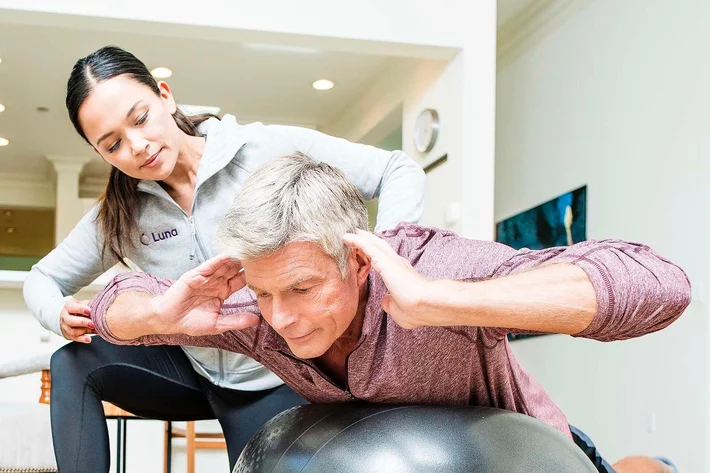
Meet with the best Cerebral palsy physical therapists in Tehachapi, California
Tehachapi, California, Luna’s physical therapists provide treatment for patients with cerebral palsy. Using proven techniques, personalized exercise routines, and an empathetic ear, our PTs can help patients living with cerebral palsy to develop the strength and skills they need to lead productive lives.
And with Luna, patients can get cerebral palsy treatment in the most convenient location of all — home. It’s physical therapy, delivered.

What is cerebral palsy?
Cerebral palsy is a neurological disorder that affects about 500,000 patients in the United States. It is a leading cause of disability in children, affecting mobility, motor skills, and muscle tone. In a majority of cases, cerebral palsy develops in response to brain injuries sustained during fetal development or birth.
Cerebral palsy can be difficult to diagnose in infancy. Parents typically first notice that their child is failing to reach important developmental milestones like rolling over, crawling, and walking. Approximately 8,000 babies and 1,500 preschool-aged children are diagnosed with cerebral palsy each year.
There are four types of cerebral palsy: spastic, athetoid, ataxic, and mixed. Treatments vary depending on the type of cerebral palsy. Though there is unfortunately no known cure, physical therapy is a highly effective treatment. With a thorough physical therapy routine, patients with cerebral palsy can manage their symptoms and prevent secondary conditions from developing.
Source: Cerebral Palsy Group

What causes cerebral palsy?
Cerebral palsy is caused by abnormal brain development or damage to the developing brain, but the specific cause is often not known. In the past, it was widely believed that a lack of oxygen during birth could cause cerebral palsy; now, it’s believed that this causes only a small number of CP cases.
Generally, cerebral palsy is either congenital or acquired. Congenital cases are caused by an event that occurred during or before birth. “Acquired” cases are caused by brain damage that occurred more than 28 days after birth. Acquired CP is much rarer, and is usually associated with a head injury or an infection such as meningitis.
There are several risk factors that can contribute to the development of cerebral palsy, although the presence of any of these factors do not guarantee that a child will develop CP. The most common factors include low birthweight, premature birth, multiple births, infections during pregnancy, birth complications, and jaundice.
The most common causes of cerebral palsy include:
- Low birthweight
- Premature birth
- Birth complications
- Infections during pregnancy


















